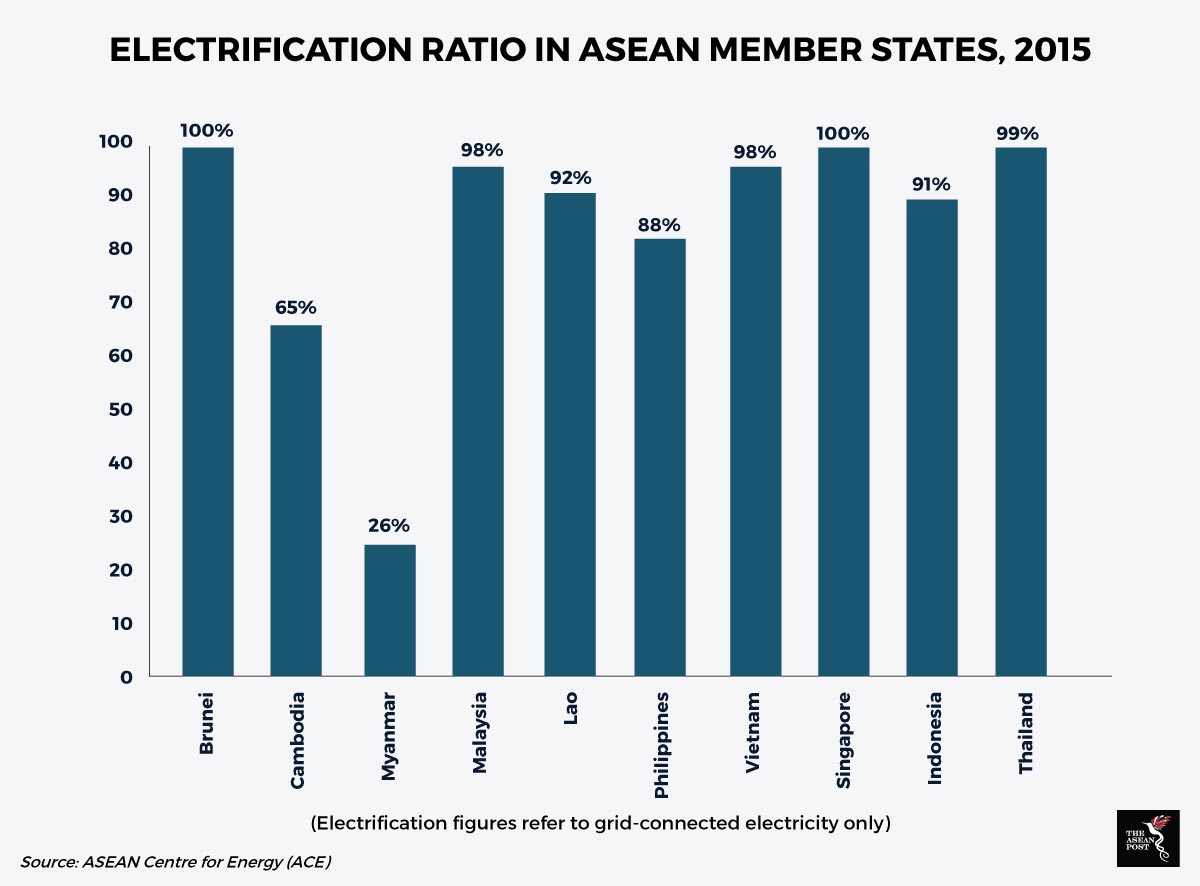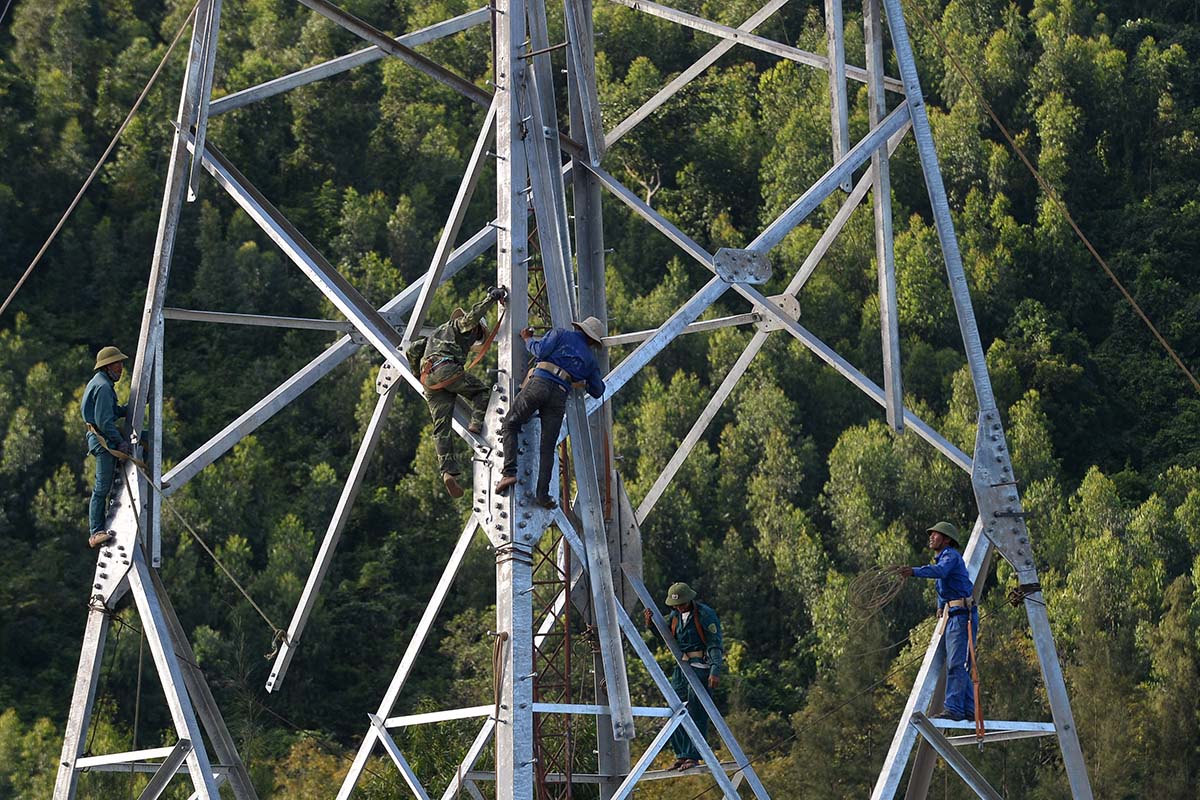As of 2015, out of the total population of 630 million people living in Association of Southeast Asian Nations (ASEAN) member states, 107 million do not have access to electricity. Those affected live mostly in remote areas and are far off from electricity grids.
Rural electrification is a major challenge for regional development. As rapid urbanisation sees more and more rural towns develop, what undergirds such a shift is access to electricity. Electricity is needed to improve quality of living and allow cottage industries to flourish. It also opens up access to other important necessities like access to clean drinking water and proper sanitation, which would improve the overall wellbeing of rural communities.
So far, the aggregated electrification ratio – percentage of those connected to the national grid – stands at 78 percent. The range, however, between ASEAN member states varies vastly. On one end of the spectrum are countries like Singapore and Brunei which have achieved 100 percent electrification and on the other, are countries like Myanmar with an electrification ratio of just 26 percent.
The main challenge with electrifying rural areas is access. The dense tropical rainforests and the myriad of remote islands where rural communities live, are natural inhibitors to infrastructure development. This hinders the erection of utility poles and high voltage cable wires that are necessary to connect rural areas to the national grid.
Bridging the electrification gap
The solution is a decentralised model of power generation. Because it is difficult to provide electricity from the national grid to such places, power must hence be generated from within these communities.
Existing off-grid electricity generation is reliant on diesel powered generators which is regarded as the quickest and most practical solution to the problem. However, this solution isn’t sustainable in the long run.
Herein, lies a crucial challenge for the region as it stands at the precipice of development.
ASEAN member states must balance between bringing electricity to remote communities and doing so in a sustainable manner. The answer here, is to turn to renewable energy.

Myanmar, which has one of the lowest electricity penetration rates amongst ASEAN member states, recently embarked on a rural electrification program using solar energy to supply electricity to 12 villages. The government there hopes to generate 30 megawatts (MW) from these off-grid sources to power close to 500,000 households in the first five years of the program.
Similarly, Cambodia, which aims to connect 70 percent of its households to the national grid by 2030 has also adopted a masterplan to facilitate rural electrification. The plan promotes the development of mini-grids that utilise solar home systems, small hydropower and solar photovoltaic systems in rural areas to achieve the targeted results.
Regional-level cooperation
The issue of rural electrification is not salient to just any one ASEAN member state. Though Singaporeans and Bruneians need not worry about access to electricity as much as a Cambodian or Burmese, in developing solutions to rural electrification, all sides can play a role.
This can be achieved via the ASEAN Power Grid (APG). Enshrined within the Master Plan for ASEAN Connectivity, the APG project is expected to enhance trans-border electricity trade which would in turn help meet rising electricity demand and improve electricity access to energy services in the region.
What the APG does is to interlink power grid systems in Southeast Asia, and to serve as a platform for multilateral electricity trading. Hence, the APG can be an attractive lure to investors who would be even more keen to invest if the power grid is wider and more far reaching. This inadvertently makes rural electrification projects an attractive investment.
The APG remains an ambition in the making and the first benefactors would be those connected to the national grid. However, as the ambition unfolds, rural areas would be riding on this wave soon. The question of how soon depends on how committed ASEAN member states are to this collective agenda.
Recommended stories:
